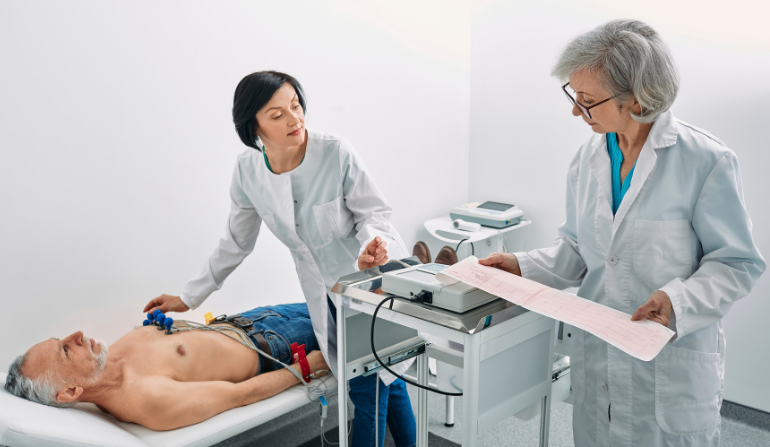2. When a person suffers from chest pain, the doctor immediately takes an ECG. Visit a doctor and get information about ECG. You may even look up an encyclopaedia or the internet.
Answer:
An electrocardiogram (ECG) test is done to diagnose potential problems of the heart by recording the electrical signals of the heart.
An ECG can be done in a hospital, clinic or a diagnostic lab. The ECG report can be taken to a medical professional who will be able to interpret it and explain the findings to the patient.
Uses: By recording the heart rate (how often the heart beats) and heart rhythm (how regularly it beats), an ECG test can accurately determine the overall heart condition and diagnose heart-related problems. It can evaluate the overall health of the heart by:
(i) Identifying irregular or abnormal heartbeats, which might indicate a problem.
(ii) Detecting the cause(s) of chest pain of heart attack by checking if the arteries through which blood travels are blocked. If done in time it can even detect and prevent future heart attacks and save lives.
(iii) Diagnosing other symptoms of heart disease such as dizziness, shortness of breath, tiredness etc so that appropriate treatment can be administered.
(iv) Monitoring the functioning of a pacemaker installed to control a patient’s heartbeat.
(v) Checking whether medications and interventions are having the proper effects on the heart.
(vi) Performing pre-surgery diagnosis of the heart to reveal any underlying heart conditions which may pose a danger during surgery.
(vii) Periodically monitoring the functioning of the heart post-surgery to detect any complications.
Procedure:
(i) The patient will be required to lie down bare-chested on the bed in the hospital or clinic room.
(ii) The health professional will attach electrodes or sensors on the patient’s bare chest.
(iii) The electrodes will be connected to the ECG monitor using lead wires.
(iv) Once the setup is in place the recording begins and usually lasts for a few seconds to a few minutes.
(v) Once the recording is complete, the results are analyzed and interpreted by a healthcare professional and the findings are documented in an official report.
(vi) If necessary, the report can then be taken to a doctor who will interpret the results and decide on the appropriate course of action.
An ECG procedure being performed on a patient is shown in the figure below:

In conclusion, ECG is a non-invasive, simple and highly effective procedure to diagnose various problems of the heart by monitoring the heart’s electrical activity. If the procedure is performed correctly accurate results are obtained which are then used to decide on the future course of action.
“When a person suffers from chest pain, the doctor immediately takes an ECG. Visit a doctor and get information about ECG. You may even look up an encyclopaedia or the internet.” – Solved.
Related Links:
Solution to Extended Learning Question 1
Solution to Activity 7.1
Solution to Activity 7.2
Solution to Activity 7.3
Solution to Chapter 7 Transportation in Animals and Plants


